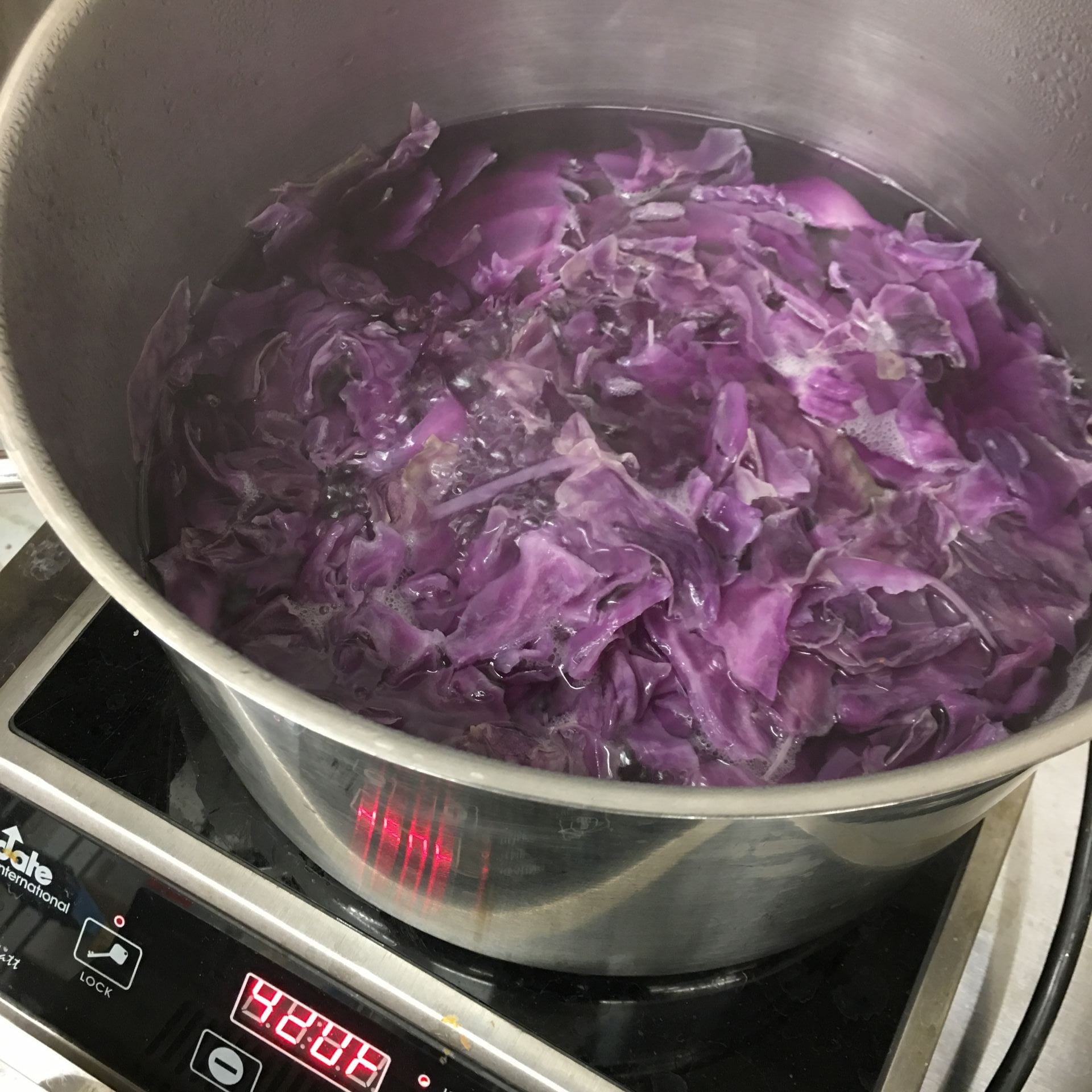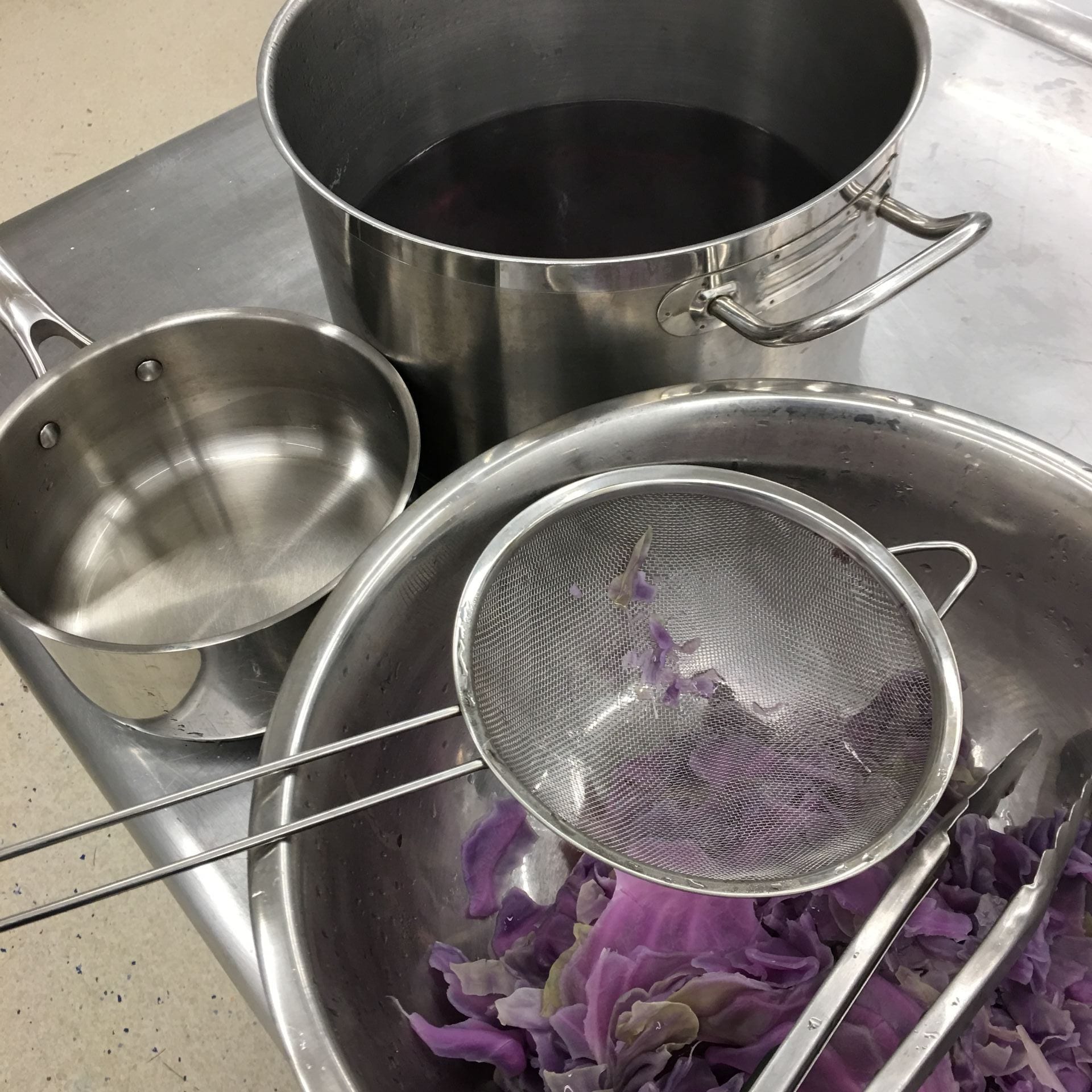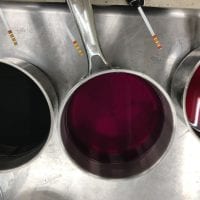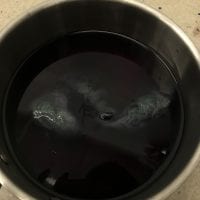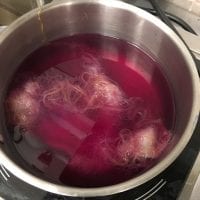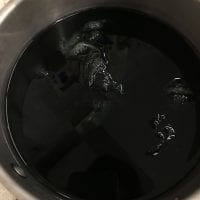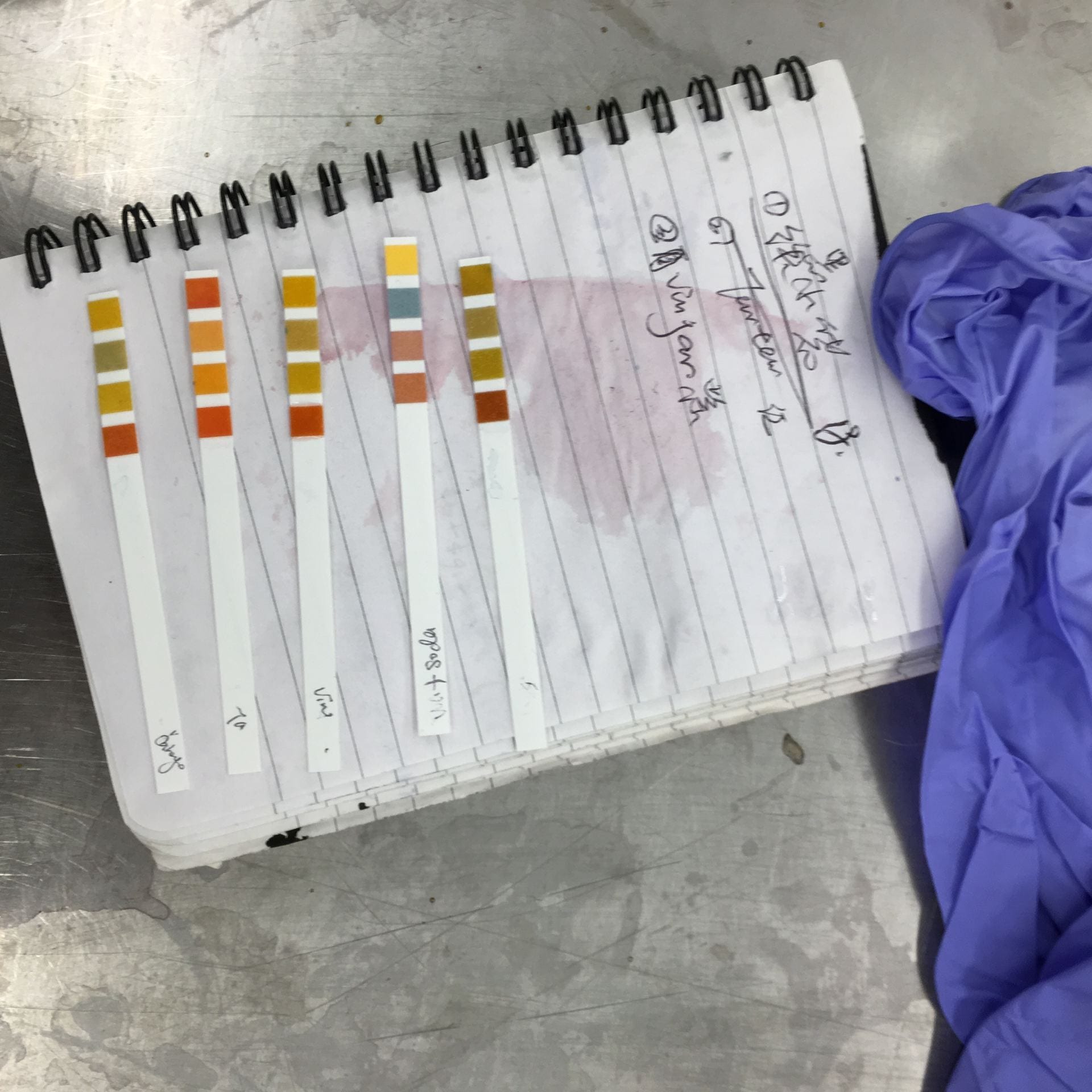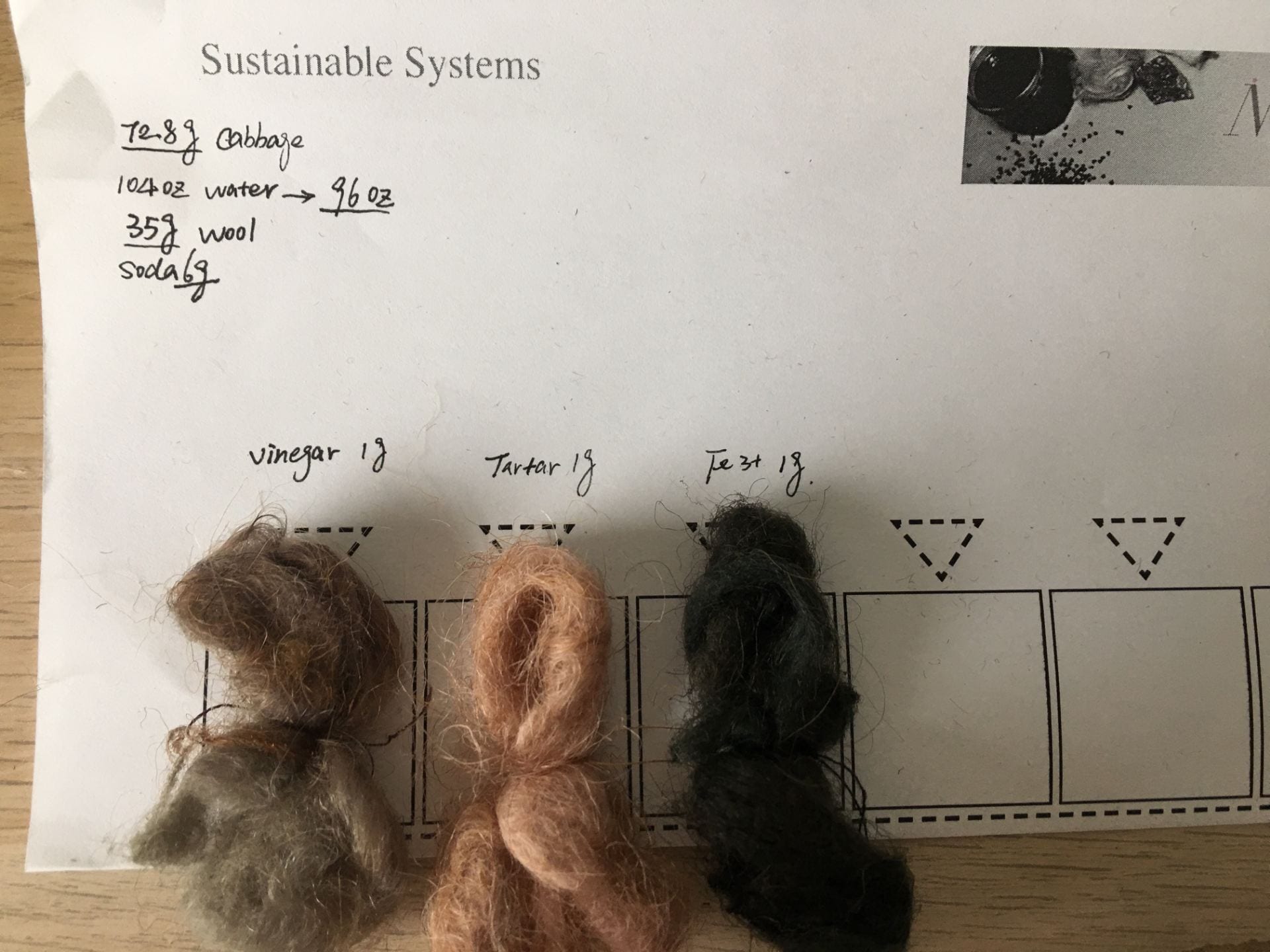Reflection on Natural dye process
Yiren Zhou
Process: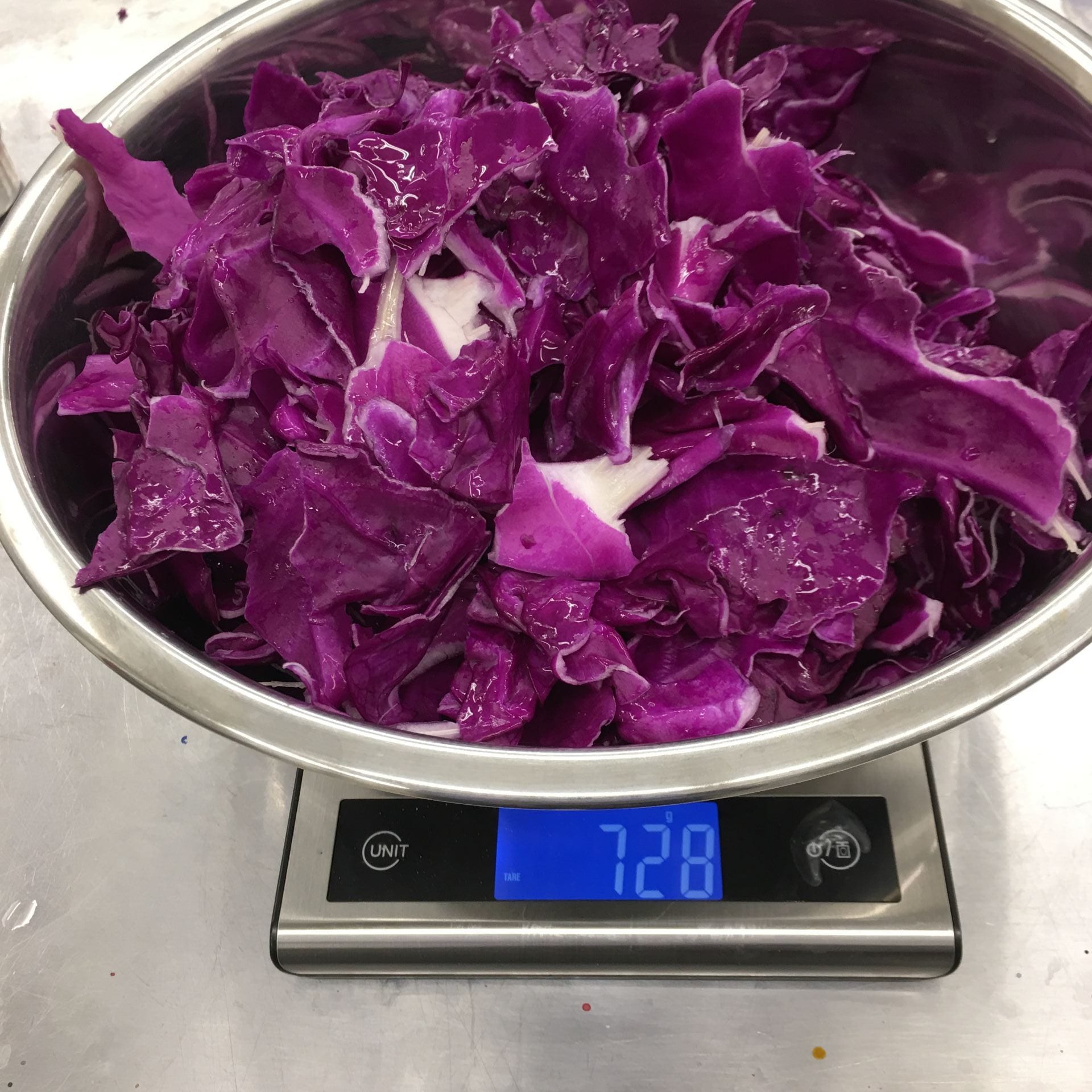
weight the cabbage
boil the cabbage
dye the wool
process notes/ph record
Reflection:
I think the natural dye is a really fun process for me. I love to dye fabrics, even leather before these assignments, therefore, I feel excited to learn a new technique. I choose purple cabbage as my main material since I can extract the color easily, and I hope I can get a light pink or violet color. In order to gain this color, I choose a cabbage that is not so purple. However, the result is totally different from what I expected. I got a blueish color and a light pink. Margaret was also using purple cabbage for natural dye. However, her result is totally different from mine. My color is much deeper than hers, I think it might because I boiled my wool for gaining color in longer time.
I think this process makes me reflect. Natural dye relates to many other systems: fashion, resource, and production. Natural dye is also a contradictory process. The process itself is much more environmental friendly. However, it is not a very efficient process, in my opinion. Because the cabbage that I used is fresh and completely eatable. I think it is also a kind of a waste to use it to dye. I think I might collect disposed vegetables for natural dye in the future. I feel colors created by natural dye are totally different from normal chemical dying materials. They are much lighter and softer which makes my eyes feel very comfortable. Also, there are much more water used than I expected. In order to control variables. I have to wash all the pieces of equipment for each step. Also, I need to boil the wool and cabbage which using a lot of energy resources.
I think I will definitely applying natural dye in my design in the future. I think this technique must work well with fabric like yarn and silk. Because they are natural fabrics, they can cooperate with natural dye in an organic and cohesive way.
